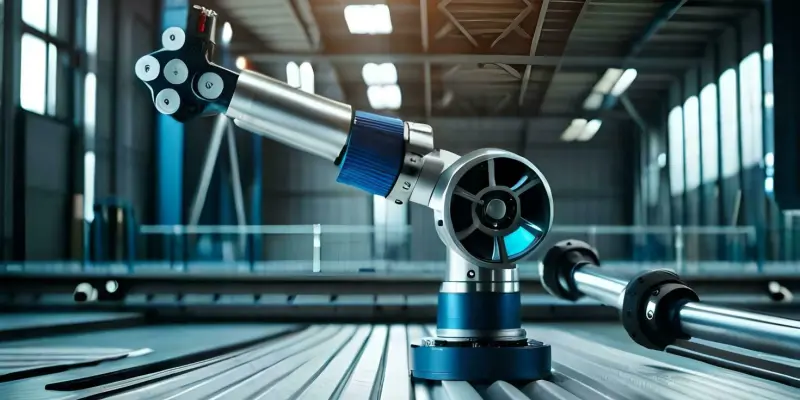FANUC’s “Cobot and Go” platform is a strategic initiative aimed at democratizing access to automation technologies. Historically, manufacturing setups with high product variety and low production volumes found traditional automation systems to be either too rigid or costly to implement. Such situations often led to labor shortages and inefficiencies in production. However, “Cobot and Go” addresses these issues by offering a user-friendly, cost-effective solution that can be tailored to specific manufacturing needs. The platform is web-based and assists manufacturers in identifying and deploying collaborative robots suitable for their unique applications. By removing the traditional barriers of high upfront investment and complex system integration, this tool allows businesses to seamlessly adopt automation technologies.
Central to the success of “Cobot and Go” is its focus on accessibility and ease of use. Users can explore various automation solutions based on parameters such as robot model, intended function, or through FANUC’s network of authorized system integrators. The platform leverages FANUC’s robust CRX collaborative robot series, known for their pre-engineered, ready-to-deploy nature. This plug-and-play model significantly reduces the complexity and time usually required for robot installation and configuration. As a result, manufacturers can implement these systems with minimal disruption to existing operations, enabling them to reap the benefits of automation without the typical challenges of creating systems from scratch.
Versatile and Reliable Collaborative Robots
The CRX series of cobots lies at the heart of FANUC’s offering, equipped with features that cater to real-world manufacturing scenarios. These robots boast an impressive payload capacity of up to 30 kg and an arm reach extending to 1889 mm, allowing them to perform tasks across various production settings. They are available in configurations suitable for diverse industry applications—be it painting, inspection, or food-grade operations—underscoring their versatility. Additionally, the compact design of these cobots enables them to be easily integrated into workflows, whether mounted on mobile carts or paired with autonomous mobile robots. This adaptability makes them particularly beneficial in environments requiring frequent retooling or reconfiguration.
Manufacturers considering the CRX line place great value on the long-term reliability of these cobots. Designed for eight years of maintenance-free operation, these robots provide a significant operational advantage in industries where downtime can be both costly and disruptive. FANUC’s strategic approach enables businesses to overcome labor constraints, allowing companies to keep pace with demand without extensive disruptions. Moreover, the platform ensures manufacturers acquire multi-purpose tools capable of evolving with production requirements, performing tasks like palletizing and machine tending with minimal adjustments. Solutions like the TOMA Palletizer exemplify how “Cobot and Go” facilitates seamless, ready-to-deploy automation.
Education and Continuous Improvement
Beyond providing the “Cobot and Go” tool, FANUC underscores its commitment to supporting manufacturers through educational and technical resources. Users have access to comprehensive guided modules via the FANUC CRX e-Learning portal, covering a range of topics from initial setup to advanced operations. This self-paced resource empowers users to become proficient operators without relying on external trainers, promoting a culture of independence and confidence among manufacturing personnel. The educational resources provided through this portal enable companies to make the most of their automation investments, ensuring a smoother transition and ongoing success. Furthermore, FANUC’s Tech Transfer portal offers detailed technical documentation, providing customers with a deeper understanding of their robotic systems. This access proves invaluable for businesses looking to train their teams effectively, fostering a culture of continuous improvement and innovation around robotic integration. Armed with this knowledge, manufacturers can maximize the efficiency and efficacy of their automation solutions, ensuring a robust and responsive production process.
A Pathway to Enhanced Productivity
In the fast-changing realm of industrial automation, small to mid-sized manufacturers often encounter major obstacles when considering robotic systems for their production lines. The challenges typically include high initial expenses, technical intricacies, and the necessity for specialized skills, which have traditionally made it challenging for these businesses to automate their processes efficiently. To tackle these issues, FANUC America has introduced an innovative web tool dubbed “Cobot and Go,” crafted to make automation both accessible and affordable for manufacturers. This digital platform is designed to simplify the integration of collaborative robots into manufacturing environments, offering businesses a practical means to boost productivity without facing prohibitive costs or requiring extensive expertise. By utilizing this tool, companies can seamlessly adopt robotic automation, enhancing efficiency and competitiveness in a landscape that is increasingly driven by technological advancements.

